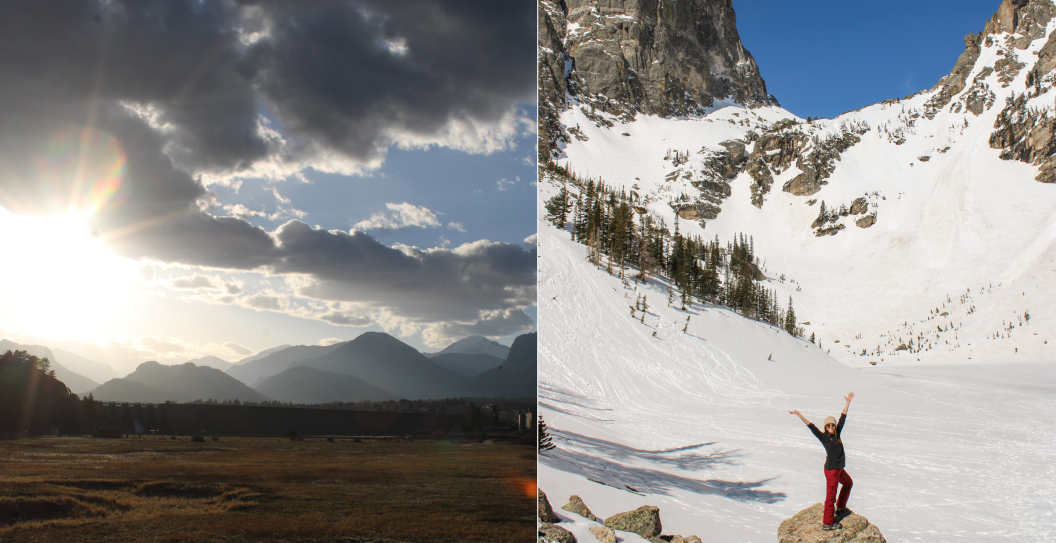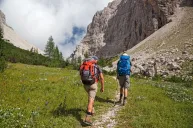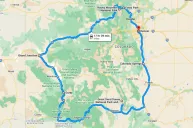Rocky Mountain National Park holds a special place among the natural wonders of our country. Spanning over 415 square miles in the heart of the Colorado Rockies, this extraordinary park showcases the raw beauty of the American West.
With its majestic peaks, serene lakes, and cascading waterfalls, the park's landscape is beautifully crafted by ancient glaciers. Not only is the park top for the hiking scenery, it's known for the diverse wildlife as well. It's a haven for animals including elk, bighorn sheep, and many bird species. From lush forests to rugged alpine tundra, Rocky Mountain National Park offers a wonderful opportunity to reconnect with nature. For hikers, photographers, and nature enthusiasts, this park provides an unforgettable experience.
Needless to say, it's no surprise it's one of the busiest national parks, boasting over 4 million visitors a year. But it's also one of the best—and I would know. I'm on a mission to visit all 64 of the U.S. national parks and I've already been to 18, so I know a thing or two about the best things to do at a national park.
If you're ready to be one of those 4 millions visitors per year, I've got you covered with a complete guide to planning your trip to Rocky Mountain National Park, filled with pro tips and recommendations.
Where Is Rocky Mountain National Park?
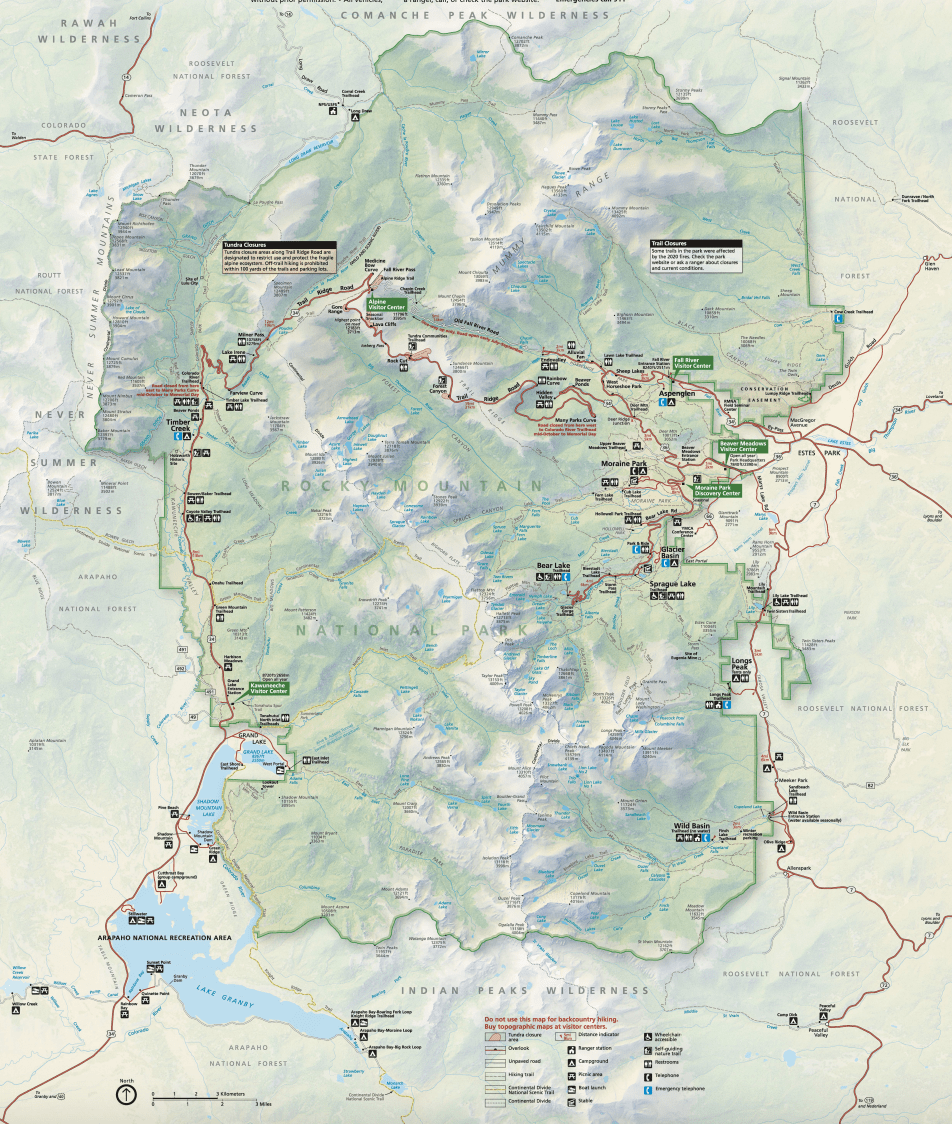
Rocky Mountain National Park
Rocky Mountain National Park is located in the beautiful state of Colorado, approximately 70 miles northwest of Denver. Its central location within the state makes it easily accessible to visitors from various parts of Colorado and beyond.
Reservations and Entry Park Fees
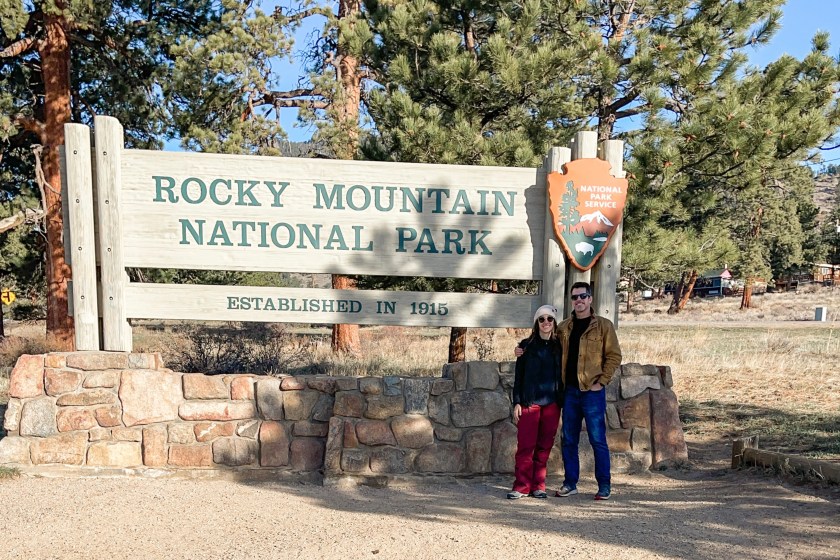
Kendra Tustin for Wide Open Spaces
You may have noticed that more and more national parks require reservations to enter. This reservation system was implemented to manage high demand and ensure better visitor experience. Rocky Mountain National Park is one of those places.
Timed entry reservations are required to be booked in advance to enter the park between the dates of May 26 to October 22. This includes any part of the park you want to visit. The cost for the permit is a whopping $2! Park access timed entry permits can be booked during the times of 9 am to 2 pm. Make sure you book well in advance, as times get swooped up very quickly. If you're planning to visit the park for more than one day, you will need a timed entry reservation for each day you are visiting. Once you're in the park, you can come and go into the park as you please throughout the day.
In addition, you will need to pay for your visit itself. The entrance fee for standard vehicles is $35 and $25 for motorcycles. If you would like to walk into the park, it will be $15 per person. The great thing about buying the park pass is that it's good for up to seven days. (FYI: As of June 1, 2023, Rocky Mountain National Park operates as a cashless system, so be sure to bring a credit or debit card.)
If you're a Colorado local, you can purchase an annual Rocky Mountain National Park pass for $70. Or, if you're like me and love seeing a million national parks throughout the year, you should probably invest in the America the Beautiful annual pass. It's $80 and covers the entrance fee for any national park you want for an entire year.
When's the Best Time to Visit Rocky Mountain National Park?
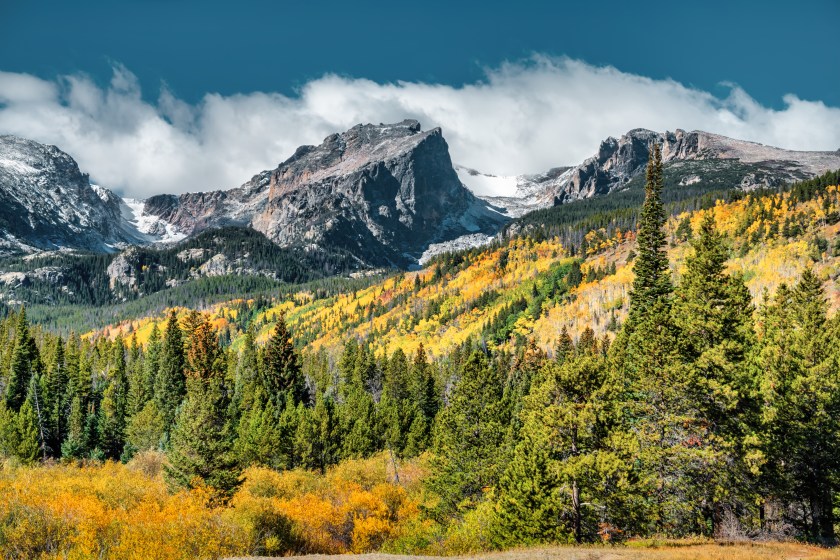
Getty Images, benedek
Summer is the most popular time to visit Rocky Mountain National Park. However, if you're looking for cooler weather and fewer crowds, the best time to go would be late September and early October. In addition, fall offers stunning foliage as the aspen trees turn vibrant shades of gold. The weather is generally mild, and crowds start to diminish after Labor Day. September is also an excellent time for hiking and wildlife viewing.
Although the park is open year-round, keep in mind that some sections and facilities may have seasonal closures and may be closed at any time based on weather conditions. The main entrances to the park, including the Beaver Meadows Visitor Center (near Estes Park) and the Kawuneeche Visitor Center (near Grand Lake), typically remain open throughout the year. The Trail Ridge Road is a beautiful scenic highway, but it's only open from late May or early June (weather-dependent) until late October or early November. Other roads, campgrounds, and visitor centers may have limited or restricted access during the winter. As always, check the national park website for the latest updates.
How Much Time Do You Need to See Rocky Mountain National Park?
The amount of time you need for your visit varies depending on your interests, available vacation time, and desired level of exploration. While it's possible to experience some of the park's highlights in a single day, I recommend staying for at least two to three days. This park is vast! With a few extra days, you can go on more hikes and not feel rushed.
If you have even more time, I think the sweet spot is to stay for four to five days. You'll be able to explore so much more of the park. It's also a good idea to have the extra days in case the weather changes or you have to deal with any road closures.
Things to Do in Rocky Mountain National Park
Rocky Mountain National Park offers a ton of activities. You can explore scenic trails for hiking, wildlife viewing, and photography. You may drive along the Trail Ridge Road for breathtaking vistas, and enjoy camping, fishing and picnicking among alpine lakes, waterfalls, meadows, and more.
Hiking
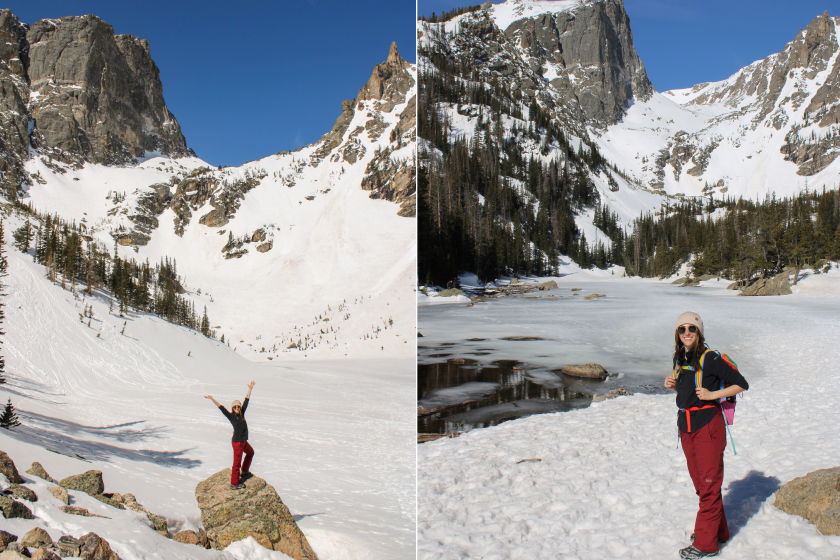
Kendra Tustin for Wide Open Spaces
Some of the best hiking is in Colorado, and Rocky Mountain National Park is the crème de la crème. The park offers a diverse range of hiking experiences, from leisurely nature walks to challenging summit climbs, short strolls to epic multi-day backpacking adventures.
Some of the best hiking spots starting from the western side of the park and ending at Estes Park on the eastern side include:
This easy, short, and family-friendly hike near Grand Lake leads to Adam Falls, a picturesque waterfall. The trail winds through a forested area, offering views of wildflowers and an opportunity to enjoy the sound and sight of the cascading falls. The trail is approximately 0.6 miles round trip and can take anywhere from 30 minutes to an hour to complete. This moderately challenging hike begins near Grand Lake and takes you through the East Inlet Valley. As you ascend, you will encounter lush forests, meadows and eventually arrive at Lone Pine Lake, nestled beneath towering peaks. This hike takes around 4-5 hours to complete and is approximately 7.5 miles round trip. This accessible and family-friendly loop around Bear Lake offers stunning views of the surrounding peaks, serene alpine waters, and beautiful wildflowers. This is such a beautiful "starter" hike in the park. It is incredibly easy, only 0.6 miles and can take anywhere from 30 minutes to 1 hour to complete. This trail gets extremely busy, so get there early. In my opinion, this is one of the most beautiful, slightly challenging, but rewarding hikes in Rocky Mountain National Park. This hike begins at the Bear Lake Trailhead just after the Bear Lake Nature Trail. This hike is approximately 2.2 - 3.6 miles round trip. This all depends on if you'd like to stop at one area and turn back. This hike will take you to see three lakes: Nymph Lake, Dream Lake and, the ultimate beauty, Emerald Lake. With beautiful peaks in the distance, this moderate hike is so worth it. If you go when there's snow on the ground (like how I did) make sure you wear spikes and bring poles. You can rent gear at Estes Park Mountain Shop for really cheap. It was a lifesaver!The Best Hikes in Rocky Mountain National Park
Scenic Drives
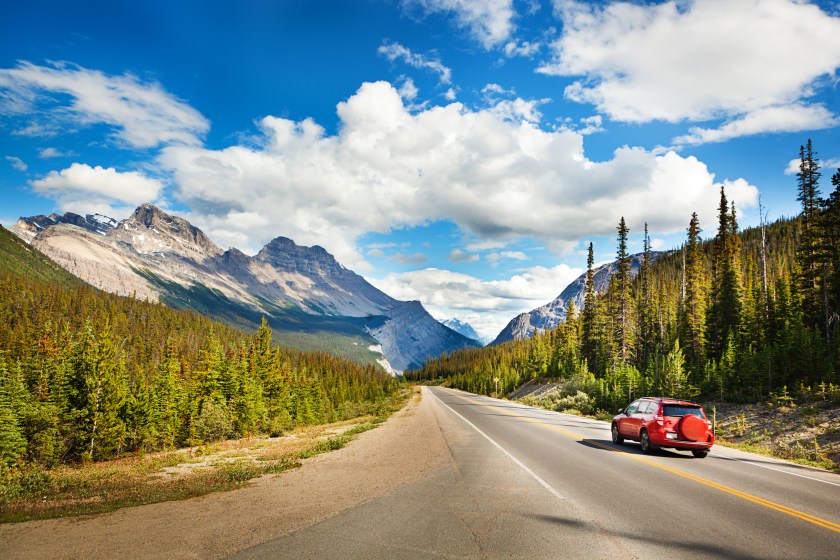
Getty Images, YinYang
Rocky Mountain National Park offers several scenic drives that allow visitors to experience the park's natural beauty from the comfort of their vehicles. Some notable scenic drives worth checking out:
Scenic Drives in Rocky Mountain National Park
This iconic drive is the highlight of Rocky Mountain National Park, taking you across the Continental Divide. It stretches for approximately 48 miles, reaching elevations over 12,000 feet. Along the way, you'll encounter breathtaking alpine landscapes, panoramic vistas and a variety of wildlife. Numerous pullouts and viewpoints provide opportunities to stop, take photos, and enjoy the park's beautiful scenery. Keep in mind, this road is only open from late May/early June to October/early November.
A historic and scenic route, Old Fall River Road offers a slower-paced, scenic drive with a more narrow and winding path compared to Trail Ridge Road. It spans 9.4 miles, climbing to an elevation of around 11,800 feet. Traveling along this road, you'll pass through forests, enjoy sweeping mountain views, and have a chance to spot wildlife.
This shorter scenic drive provides access to several popular trailheads and stunning destinations. Along Bear Lake Road, you can visit Bear Lake, Nymphs Lake, Dream Lake, and Emerald Lake, each offering its own unique beauty. The road also offers glimpses of towering peaks, dense forests, and picturesque meadows.
This drive takes you through the stunning Moraine Park Area, known for its expansive meadows and frequent wildlife sightings. The road provides opportunities to view elk herds grazing in the meadows, with gorgeous backdrops of the surrounding mountains.
Other Activities
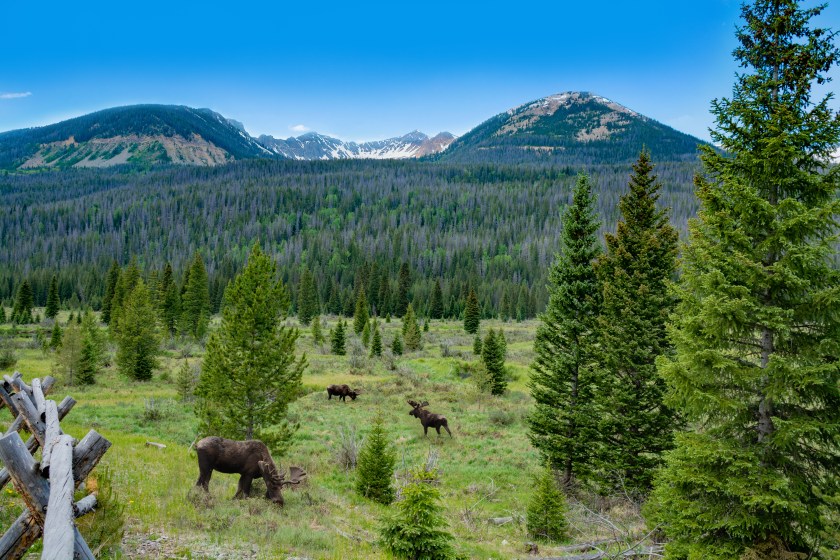
Getty Images, MargaretW
Rocky Mountain National Park has tons of other ways to play in the epic landscape, including:
- Wildlife viewing: if you start at dusk, you are bound to see Elk.
- Photography: this park is a photographer's paradise.
- Camping: You may pitch a tent at the several campgrounds in the park.
- Fishing: Make sure you get a valid Colorado fishing license in advance.
- Scenic picnicking: Pack a picnic and take advantage of the numerous picnicking areas throughout the park
- Ranger programs: Join nature walks, interpretive talks, campfire programs, and stargazing sessions.
- Winter activities: During the winter season, you can engage in activities like snowshoeing, cross-country skiing, and sledding in designated areas.
This park has four visitor centers, each offering valuable information, exhibits, and services to enhance visitors' experiences.
Visitors Centers in Rocky Mountain National Park
Location: 500 Big Thompson Ave, Estes Park, CO 80517
Activities: The visitor staff can assist you in finding local restaurants, lodging, activities in the area, wildlife viewing, and more. There is also a gift shop to grab some local souvenirs!
Location: This visitor center is located near the park's entrance on the eastern side, just west of Estes Park.
Activities: Here, you can obtain park maps, brushes, and current trail conditions. Explore exhibits on wildlife, ecosystems, and cultural history. Attend ranger-led programs and join guided nature walks. The visitor center also has a bookstore and gift shop.
Location: Situated along the Fall River Road, the visitor center is found on the eastern side of the park.
Activities: Get information on park facilities, road conditions, and activities. Discover exhibits highlighting the park's geology, wildlife, and history. Attend educational programs and join ranger-led talks. The visitor center also provides restrooms and a small bookstore.
Location: Found on the western side of the park, near the town of Grand Lake.
Activities: Obtain park information, maps and brochures. Explore exhibits on the park's diverse ecosystems, flora and fauna. Attend ranger-led programs and nature walks. The visitor center includes restrooms, a bookstore and picnic facilities.
Location: Situated along Trail Ridge Road, at an elevation of approximately 11,796 feet.
Activities: Enjoy breathtaking views of the surrounding mountains and tundra. Learn about the unique Alpine Environment through exhibits on wildlife, weather, and geological formations. Attend ranger talks and guided walks. Restrooms and a gift shop are available at this high-elevation visitor center.
What Should You Bring to Rocky Mountain National Park?
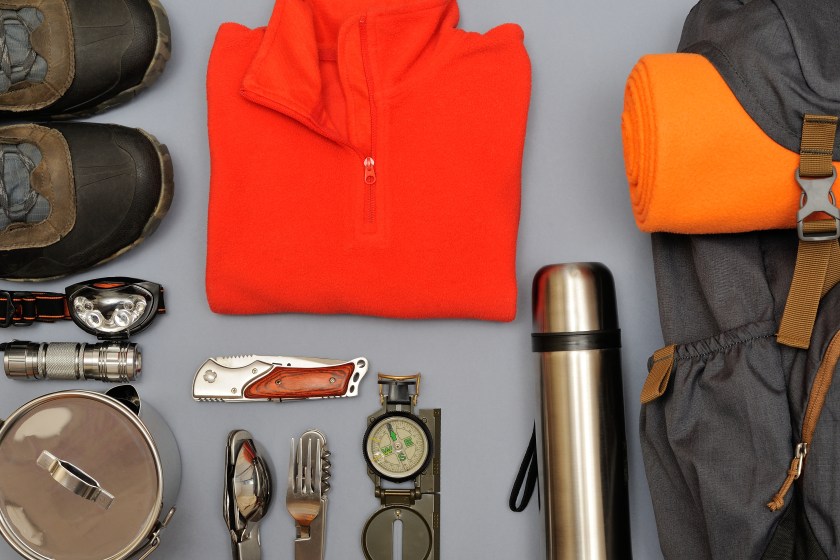
Getty Images, avpod
Like any national park, it's important to be prepared for various conditions and activities. Carry a backpack or anything comfortable to hold all of your essentials like your water bottle, bug spray, SPF, first aid kit, camera, and a map.
My packing list on my recent trips to the park included:
1. Layered clothing
The weather changes quickly in the mountains, so you need to bring layers. When I hiked to Dream Lake in late winter, I had on leggings, snow pants, a tank top, long-sleeve thermal, and a puffy jacket. It was around 50 degrees and cloudy in the morning. Halfway through the hike, the sun came out and I was baking from the inside out as the temperature climbed up to 72 degrees. I eventually had to strip down to just my leggings and tank top because I was so hot. The moral of the story: Even if you expect one type of weather or temperature, wear layers so you can adjust for comfort as needed.
2. Plenty of water and snacks
As always, make sure you bring an adequate amount of water, especially while hiking. Packing energy-boosting snacks like protein bars or nuts can also come in handy on strenuous hikes.
3. Navigation tools
Don't forget a detailed map, guidebook, or mobile map to navigate the trails. I found it was difficult to hike during the winter because so many of the trail markers were buried in the snow. We even got lost at one point, but thanks to other hikers around us, we figured out where to go.
Can You Bring a Dog to Rocky Mountain National Park?
Yes, dogs are allowed in Rocky Mountain National Park, however there are some regulations and restrictions:
- Dogs are allowed in developed areas, including parking areas, campgrounds, picnic areas, along roads, as long as they are on a leash and that is no longer than six feet in length.
- Dogs are not permitted on any park trails, tundra areas, or in wilderness areas, even if they are leashed.
- Pet owners are responsible for cleaning up after their dogs. Always carry waste bags and dispose of them properly in designated trash receptacles.
- Never leave your dog unattended in a vehicle. Vehicles can quickly become hot, even on mild days, which can be dangerous or even fatal for pets.
Where to Stay In Rocky Mountain National Park
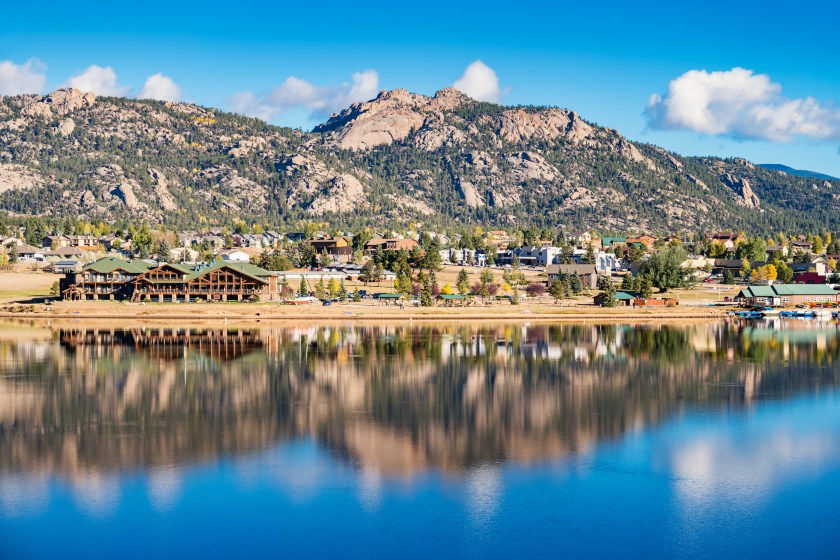
Getty Images, benedek
The great thing about Rocky Mountain National Park is that there's a plethora of places to stay. Whether you prefer camping, hotels, AirBnBs, you'll find lodging that suits your needs.
Rocky Mountain National Park Lodging
Located just outside the park's eastern entrance, Estes Park offers a range of lodging options, including hotels, motels, cabins and vacation rentals. It's a convenient basecamp with amenities, dining options, and proximity to the park.
I stayed in Estes Park when I visited the Ridgeline Hotel at Estes Park and loved it. Beautiful rooms, an indoor pool/hot tub, fitness center, restaurant, fire pits and a view of the mountains. Plus, it was a 25-minute drive to the park. Enough said!
There are several other amazing hotels in Estes Park:
- The Stanley Hotel - FYI this hotel is famous because it is where Stephen King stayed and inspired him to write "The Shining."
- Murphy's Resort at Estes Park
- The Estes Park Resort
- Rocky Mountain Hotel
- Taharaa Mountain Lodge
Situated near the park's western entrance, Grand Lake is another gateway town with various accommodations available, such as lodges, cabins, and campgrounds. It provides easy access to the park and offers scenic lake views.
Rocky Mountain National Park has an abundance of campgrounds within the park that offer a more immersive experience. These include Moraine Park Campground and Aspenglen Campground, among others. (FYI, some campgrounds require reservations, so check online for availability and book in advance. Spots fill up very quickly. Remember, this is a very popular national park!)
Glacier Basin Campground is the most popular campsite at Rocky Mountain National Park. The campsite is open for 2023 and requires reservations. You will need to book at least six months in advance and timed entry permits are included with your camping reservation. Campers can enter the park beginning at 1pm on the first day of the camping reservation.
Located south of Estes Park, Allenspark provides a quieter setting with bed and breakfasts, cabins and lodges. It offers a peaceful retreat while being five minutes from the park!
Rocky Mountain National Park and Altitude Sickness
It's worth mentioning that altitude sickness—also known as acute mountain sickness—is real. I'd been warned in advance and thought, "Nah I'll be good!" And I was wrong! I experienced altitude sickness, becoming extremely dizzy and nauseous, on a hike and had to take many breaks to catch my breath to get through it.
I'm from Sacramento where the elevation is 30 feet (9 meters) above sea level. Rocky Mountain National Park's elevation ranges from 7,200 feet (2,286 meters) at its lowest point, to over 14,000 feet (4,267 meters) at its highest peak. That's an impressive jump.
My best piece of advice? Allow your body some time to adjust to the altitude before you begin hiking. Bring plenty of water, snacks, avoid alcohol, take your time on the hike, and you'll be peachy keen.
Is Rocky Mountain National Park Worth a Visit?
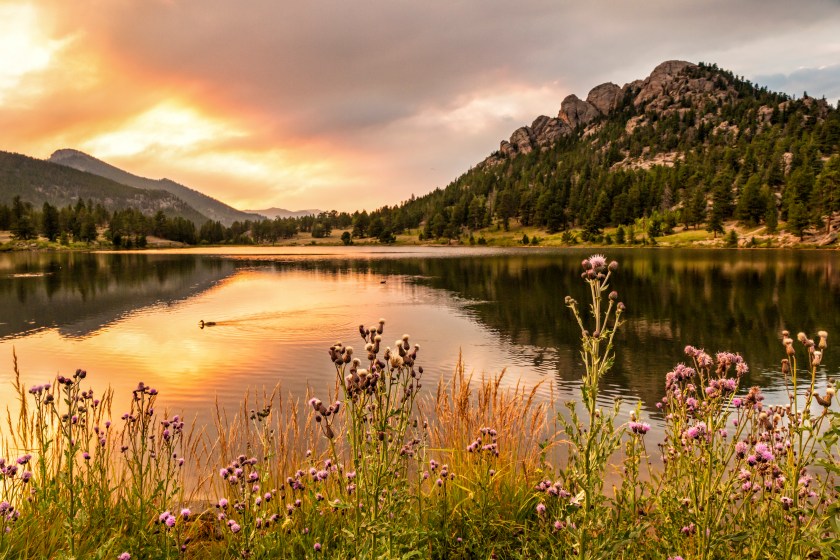
Getty Images, lightphoto
From the scenery to the wildlife to the hiking, Rocky Mountain National Park is absolutely worth visiting. Whether you're an outdoor enthusiast, a nature lover, or someone seeing tranquility in a beautiful environment, Rocky Mountain National Park has something to offer everyone. Do yourself a favor, and go experience it for yourself!
READ MORE: 9 Lesser-Known Campgrounds in Colorado You Can Actually Score a Spot At (For Now)
